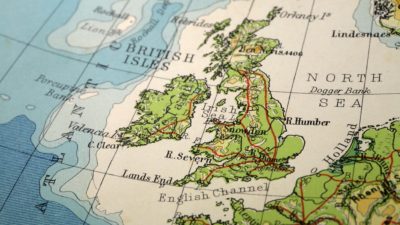At the time of writing, shares in retailer DFS Furniture (LSE: DFS) support a dividend yield of 6.1%, significantly above the market average of around 4%.
This yield might look attractive for income seekers, but I don’t believe it’s sustainable. Instead, my money is on National Grid (LSE: NG).
Two different companies
National Grid and DFS are two very different companies. The former operates critical utility infrastructure across the UK and the United States, while the latter sells furniture in the UK.
Should you invest £1,000 in Sainsbury's right now?
When investing expert Mark Rogers has a stock tip, it can pay to listen. After all, the flagship Motley Fool Share Advisor newsletter he has run for nearly a decade has provided thousands of paying members with top stock recommendations from the UK and US markets. And right now, Mark thinks there are 6 standout stocks that investors should consider buying. Want to see if Sainsbury's made the list?
There are positives and negatives to investing in both businesses. National Grid is attractive as an income investment because the enterprise has steady, predictable income from assets around the world that would be difficult to replicate if a competitor wanted to. However, the company is highly regulated and can only make as much profit as regulators will allow.
The company is currently in the process of responding to a new pricing regime regulator Ofgem is proposing that will take effect from 2021. Under the new regime, companies like National Grid will be able to charge less for their services, which could save households an estimated £45 a year, but cost the industry £6.5bn in total. If these changes are introduced, there’s a genuine chance that National Grid’s dividend will come under threat.
On the other hand, DFS’s income is more unpredictable, and the company’s outlook is dependent on the financial health of the UK consumer. Still at the moment, it appears that DFS is currently outperforming in a challenging consumer environment.
For the five months to the end of December 2018, the retailer reported sales growth of 10%, and like-for-like online sales growth across all brands of 22%. These are sort of numbers many retailers can only dream of right now.
Dividend credentials
What does this mean for the company’s dividend? Well for the time being, DFS’s dividend looks safe. The total distribution of £24m was covered twice by free cash flow in the financial year ending 28 August 2018, and 1.7 times by earnings per share.
Despite these figures, net debt has been increasing steadily since 2016, rising by around 16%, which tells me It’s spending more than it can afford. I’m worried about this in the current hostile consumer environment.
In comparison, National Grid’s dividend looks to me to be the much better investment. While there’s a risk that the group might face a cash squeeze under that new pricing regime in 2021, management’s efforts to expand into new markets, specifically North America, are paying off, and this could help protect the dividend. What’s more, unlike DFS, National Grid isn’t subject to consumer trends — there will always be a demand for electricity — so the business has greater visibility on earnings and can plan for the dividend, accordingly.
The bottom line
Considering all of the above, I would sell shares in DFS and snap up those in National Grid, instead. With a dividend yield of 6.2%, I think this FTSE 100 income champion could help improve your investment returns in 2019.







